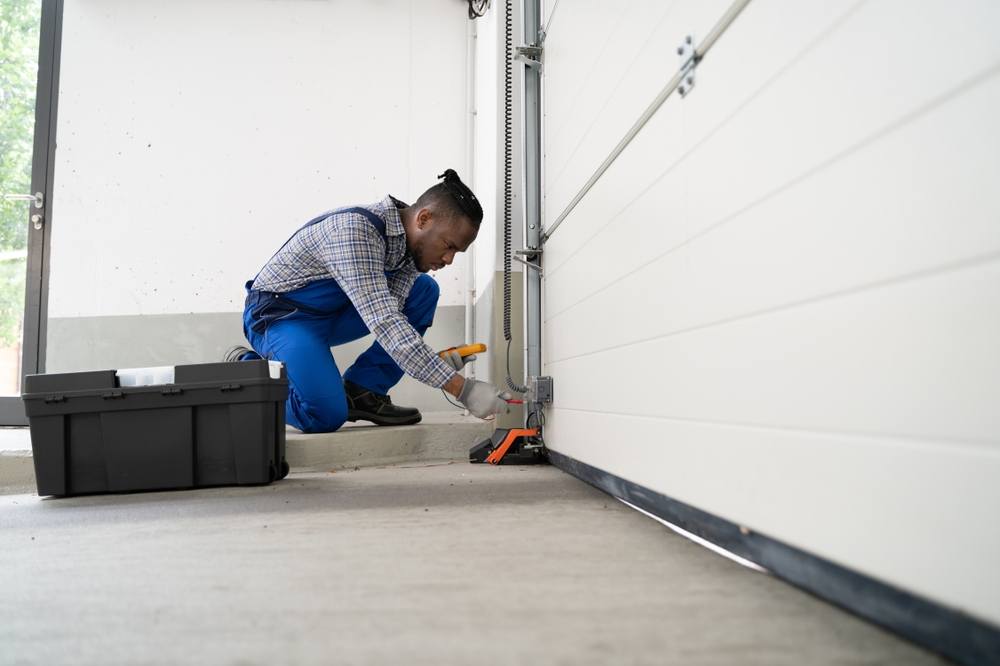Your garage door does more than just get you in and out—it’s crucial for your home’s security and curb appeal. Regular maintenance helps avoid costly repairs and keeps things running smoothly. Spotting issues early saves time, money, and stress. Read on to learn how simple steps can extend your garage door’s life.
Main Components of a Garage Door
Garage doors are more than panels that go up and down. They have moving and stationary parts that work together to lift heavy loads. Learning about overhead garage door components helps you spot problems early.
Garage Door Panels
Panels are the face of your garage door but also provide structure and insulation. Quality garage door panels regulate temperature and lower energy costs. Damaged panels weaken the door and hurt its appearance.
Springs (Torsion and Extension)
Springs bear the door’s weight, helping the opener lift. Torsion springs are above the door; extension springs run along the sides. They’re under high tension and can be dangerous, so leave repairs to a professional.
Garage Door Opener
The opener is the motorized system that raises and lowers the door. It can be chain-driven, belt-driven, or screw-driven. Chain-drives are durable but noisy, while belt-drives are quieter. Screw-drives need less maintenance but may not be as smooth in cold weather, or as strong to lift heavy hurricane doors.
Tracks and Rollers
Tracks and rollers guide the door as it opens and closes. Misaligned parts cause grinding or uneven movement. Debris or wear over time can lead to malfunctions.
Weather Seals and Insulation
Weather seals and insulation keep out pests, rain, and extreme temperatures. Worn-out seals let drafts in, raising heating or cooling bills. Updating these parts ensures a comfortable garage and protects stored items.
Essential Maintenance Tips for Garage Door Components
A little maintenance goes a long way. Regular care prevents breakdowns and extends the life of your door.
Inspect for Wear and Tear
Examine panels, rollers, and springs at least once a month. Look for cracks, rust, or signs of wear. Catching small issues early prevents expensive repairs.
Lubricate Moving Parts
Lubricate hinges, rollers, tracks, and springs to prevent squeaks and jerky movements. Use a silicone-based spray or white lithium grease. Avoid over-lubricating, as it attracts dirt.
Test the Balance of the Door
An unbalanced door strains the opener. To test, disconnect the opener and move the door halfway. If it stays in place, it’s balanced. If it falls, you may need to adjust or replace the springs.
Clean Tracks and Panels
Dirty tracks cause rough operation. Use a damp cloth or mild cleaner to remove debris. Clean panels with a sponge and soapy water to prevent grime buildup.
Reinforce Weather Stripping
Weather stripping wears out over time, reducing its sealing ability. Check for gaps or tears. Replace damaged weather stripping to maintain energy efficiency.

Signs It’s Time for Replacement
Nothing lasts forever. Here’s how to know when to replace parts instead of repairing them.
Frequent Noisy Operations
A noisy door could indicate problems with rollers, springs, or the opener. If lubrication doesn’t help, it’s time for a replacement. Don’t ignore excessive noise.
Uneven Door Movement
If your garage door jerks or tilts, the tracks or springs may be the issue. This affects safety and performance, so fix it quickly.
Sagging Door Panels
Sagging panels stress other components and compromise the door’s structure. Replacing weak panels prevents further damage and keeps your home looking good.
Slow or Unresponsive Opener
An opener that struggles or stops working may be beyond repair. Check the remote and batteries first. If the issue persists, consider upgrading to a more efficient model.
Choosing the Right Replacement Parts
Replacement isn’t just about swapping parts; it’s about choosing the right ones. High-quality components mean longer-lasting performance.
Match Parts to Your Door Model
Using the wrong part can create new problems. Always match replacement components with your door’s make and model for proper function.
Opt for High-Quality Materials
Cheap parts to a garage door may save money upfront but wear out faster. Choose durable materials, like stainless steel tracks or insulated panels. This helps you avoid frequent replacements.
Ready to Improve Your Garage?
If you’re unsure about which parts to choose or how to install them, consult a professional. They ensure safe installation and help you select the right components.
With regular care, your garage door will run smoothly, preventing costly repairs. Replace worn parts early to avoid bigger issues. Proper maintenance can extend its life for years to come. Get an estimate today and keep your garage door in tip-top shape!

